Biodiversity for Aquaculture
The barramundi is a truly unusual contemporary - not only in terms of its excellent taste.
It lives in both fresh and salt water. It is usually born male and later becomes female.
The low-fat meat of the barramundi is white, juicy and tender with a firm consistency.
It is still considered a niche product in european aquaculture.
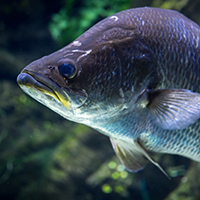
The trout is one of the most popular edible fish.
In aquaculture, mainly rainbow trout are farmed in freshwater with great success.
The low-fat meat of the rainbow trout is tender and tasty. Depending on how it is fed, the meat can be white or pink. The bones can be easily removed and the preparation method is versatile: poached, steamed, fried or grilled - a trout is always a delicacy.
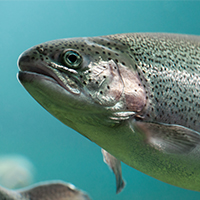
Salmon are represented in the aquaculture top ten of fish with a production of over 2.5 million tonnes per year worldwide. The Atlantic salmon accounts for the largest share of the production volume. (Source: www.aquakulturinfo.de)
Salmon is one of the most popular food fish. No wonder: its meat is tender and has an unmistakable taste. It can be prepared in many different ways. It tastes good fried, baked, poached, hot or cold smoked and, of course, as graved salmon.
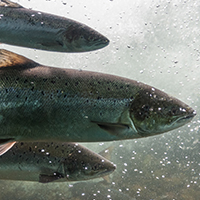
There are many different types of prawns. However, it is the giant prawn - also called king prawn or gamba - that tastes particularly delicious.
Behind these euphonious names, however, there are no "species" but rather an indication of the size of this seafood.
In aquaculture, so-called flagellate prawns are usually farmed. These include the black tiger and the white tiger shrimp.
Whatever the case, they taste good! And they taste best fresh. Thanks to modern recirculation systems, farming on land is also possible. In this respect, the trend is towards "prawns from the neighbourhood".
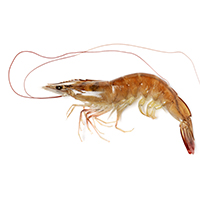
Carp is a delicacy - not only at Christmas or New Year's Eve. Especially in the Franconian home of WATER - proved, the hearty fish is extremely popular.
Unfortunately, carp is often underestimated: it can be prepared in an extremely versatile way.
Originally, the carp comes from Asia, where it was popular as a fasting food. The Romans introduced them to Europe and bred them.
Incidentally, the carp is one of the first fish to be raised in aquacultures.
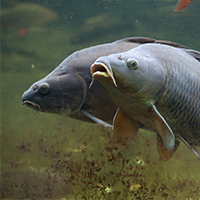
Char belong to the salmon family.
The popular Alsatian chars are mainly bred in aquacultures and make the hearts of fish lovers beat faster.
The salmon-coloured, firm meat can be prepared in many different ways.
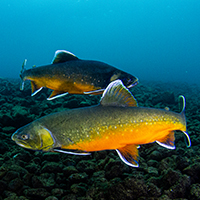
The sturgeon is a predatory fish without teeth. Sounds strange - but it's true. It has been roaming the earth for about 200 million years. Like salmon, it lives in the sea and comes to the rivers to spawn.
There are many different species. In auqa culture, the Siberian and Russian sturgeon are usually found.
About the taste: In our opinion, sturgeon should not be missing from any barbecue. Cut into chops and prepared with a lot of heat, it is a delight. A little tip: We recommend fresh herbs, feta cheese and pita bread with it.
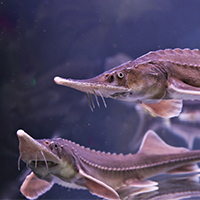
The tilapia belongs to the cichlid family. To be more precise, they are cichlids that are used as food fish.
It is an uncomplicated fellow. It is satisfied with a purely vegetable diet and is robust. This is what makes it so interesting for aquaculture.
Its boneless white fillet is ideal for Asian cuisine.
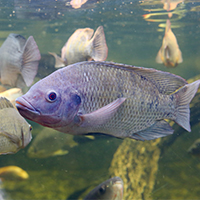
What a beauty! The European catfish or river catfish is the largest pure freshwater fish in Europe. This sturdy fish can grow up to 3 metres.
The catfish is an extremely tasty edible fish that is particularly easy to prepare. It has a pleasantly mild taste and very few bones.
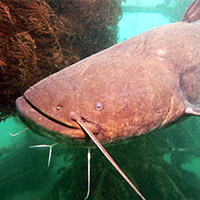
The zander belongs to the true perch family. Its behaviour is rather rowdy when young: young zander are cannibals and eat their smaller conspecifics.
The low-fat meat is white and firm. Pike-perch fillets are almost boneless and can be wonderfully roasted or steamed. Pike perch harmonises with mild flavours and is an absolute delicacy when prepared with fresh herbs.
It is advisable to always prepare zander fillets with the skin on, as this becomes beautifully crispy and tastes wonderful.
It is no wonder that this delicious fish is considered a beacon of hope for circular-based aquaculture.
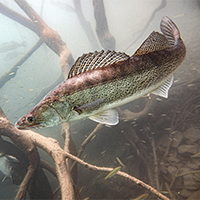
 Deutsch
Deutsch  English
English
 Français
Français